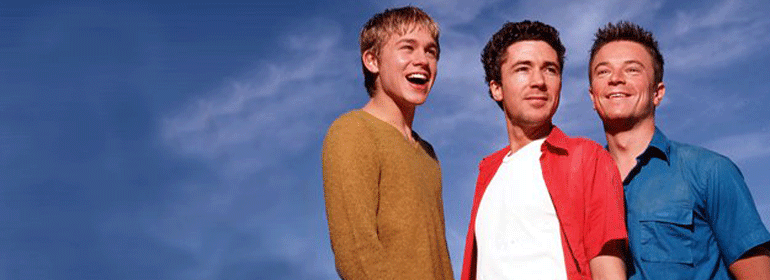As HBO’s ‘Looking’ continues to divide critical opinion, Alan Lambert looks back at the mother of all gay television shows, and asks if it’s still relevant today.
In 1999, when Nathan Maloney was first introduced as one of the central characters of Channel 4’s brazen new show, Queer as Folk, he was just 15 years old. Now, 15 years later, I’m looking back and see whether the show has stood the test of time, and whether the stories it told still resonate.
Following the aforementioned schoolboy, Nathan (Charlie Hunnam), supermarket manager, Vince Tyler (Craig Kelly), and the ultimate gay anti-hero, advertising executive, Stuart Alan Jones (Aiden Gillen), Queer As Folk showed taboo lives and love affairs in such an unapologetic manner, it had viewers, both straight and gay, hooked from the get-go.
 Stuart and Vince lived a hedonistic lifestyle of drink, drugs, clubbing and one-night stands, and one night on Canal Street Stuart made eye contact with underage Nathan, the one-night stand who refused to go away. The gang were supported through thick and thin by the force of nature that was Vince’s mother, Hazel (Denise Black).
Stuart and Vince lived a hedonistic lifestyle of drink, drugs, clubbing and one-night stands, and one night on Canal Street Stuart made eye contact with underage Nathan, the one-night stand who refused to go away. The gang were supported through thick and thin by the force of nature that was Vince’s mother, Hazel (Denise Black).
Dealing with the ups and downs of gay life, from coming out to love, lust and loss, Russell T Davies’ series was audacious in every sense of the word, portraying gay archetypes, rather than stereotypes, in such an uncompromising manner that critics at the time didn’t know whether to love or hate it. While one reviewer in The Independent found Stuart to be reminiscent of former lovers, The Daily Mail (typically) called for a return to censorship after the pilot had aired.
The show didn’t shy away from dealing with thorny subjects, from secondary character Phil’s accidental overdose, to Nathan’s bullying in a school system where gay students couldn’t be supported by their teachers, from homophobia in various forms to the horrors of turning 30 in an youth-obsessed gay culture – but it was all served up with a side order of black humour that made it very watchable.
In a way Queer as Folk was a coming-of-age story for all three characters, all of whom had to come out at some stage throughout the two series, either to parents or co-workers, each one breaking a heart in the process but eventually managing to mend the relationship.
While the music and the clothes are a little dated, it does stand the test of time because we can still learn from this show. We can learn that you don’t have to be the most prevalent gay activist to stand up to homophobes*, that if you can muster the confidence to tell someone you love them they might say they love you back, and that if you really want it, your best friend might buy you Doctor Who’s K-9 for your birthday.
The series went on to win GLAAD awards and Aiden Gillen was nominated for a BAFTA for his role. It was remade for US TV and while the UK version only lasted two series, the US series went on for five seasons, covering even more topical subjects such as gay marriage, parental rights and Aids.
If you haven’t seen it, you should. If you watched it back in the day, it might be time to revisit the first great gay TV series, and the best.
© 2014 GCN (Gay Community News). All rights reserved.
